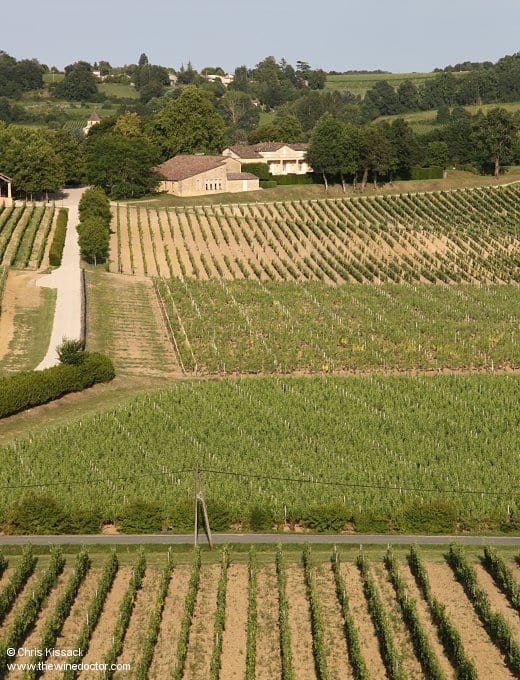Castillon
I slipped into the front passenger seat of Jean-Luc Thunevin’s 4×4 and a few minutes later we were heading out of the town of St Emilion, and into the vineyards. This had been my idea; when I had first spoken with Jean-Luc regarding a visit, I had asked if I could look at some vines. I learned, as he drove me out towards Château Valandraud, that this had been a mildly pleasant surprise for him.
Perhaps, I wondered to myself, most of Jean-Luc’s visitors are looking merely to bask in his reflected glory, to marvel at his meteoric ascendency from part-time disc jockey and bank clerk to one of the leading winemakers in St Emilion. Others, if they’re geeky enough, are perhaps more interested in taking a nosey around his garage, hidden down a St Emilion side-street, where he made his first vintage (and where, it has to be said, the term garagiste was born). Perhaps others are just after a quick slurp of Valandraud. But nobody, it seems, ever asks to look at the vineyards.
And so my visit soon turned into a bumpy safari over the French countryside, in part spent wishing that the suspension in Jean-Luc’s 4×4 offered just a little more cushioning protection from the irregular ruts and furrows of the land. After a short drive across rough land alongside some vines we came to a halt on the cusp of a vineyard, on the section to the north-east of St Emilion, not too far from the main road out to Saint-Christophe-des-Bardes. Here, in the northern section of the St Emilion appellation, there is a gentle slope down towards the Barbanne, not the slightly more impressive scarp that there is on the other side of the limestone plateau. The superficial limestones give way to the Molasses du Fronsadais, a soft conglomerate of sedimentary rocks, marl and clay; where we stood, however, the superficial soils were quite sandy. Jean-Luc-Thunevin positioned himself next to the vines to the west. “Here I am in St Emilion”, he announced, going on to suggest that the land was valued at something in the order of about €2million per hectare (for grand cru classé vineyards, not generic St Emilion). Taking a few steps east, into the next vineyard, he continued “and now I am in Castillon”, the land value here said by Jean-Luc to be more like €20,000 per hectare.
Underfoot, beneath the sandy soils, the true terroir – the argile (clay), calcaire (limestone) and molasses (sedimentary conglomerate) of the gently sloping plateau were the same. The grape varieties in each of the vineyards, Merlot of course, were also the same. But the prices of the wines made from these two vineyards will be dramatically different, with a cru classé St Emilion commanding many times what a simple bottle of Castillon can merit. Even a basic St Emilion will probably cost more than a Castillon. This, to the happy drinker, is the joy of Castillon; it is not difficult to see why, with great terroir and a need for more affordable wines, for many years this region has been touted as the “next big thing” in Bordeaux.

